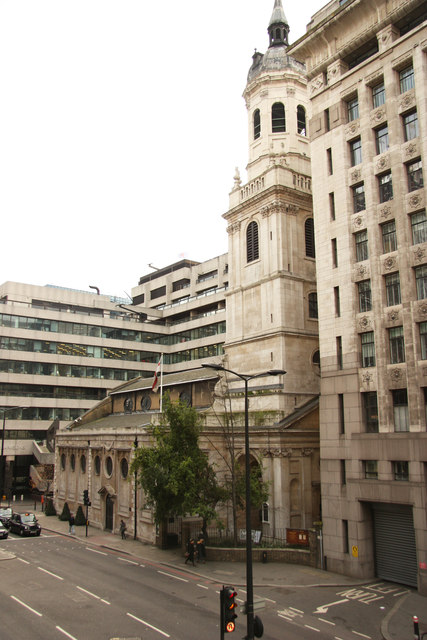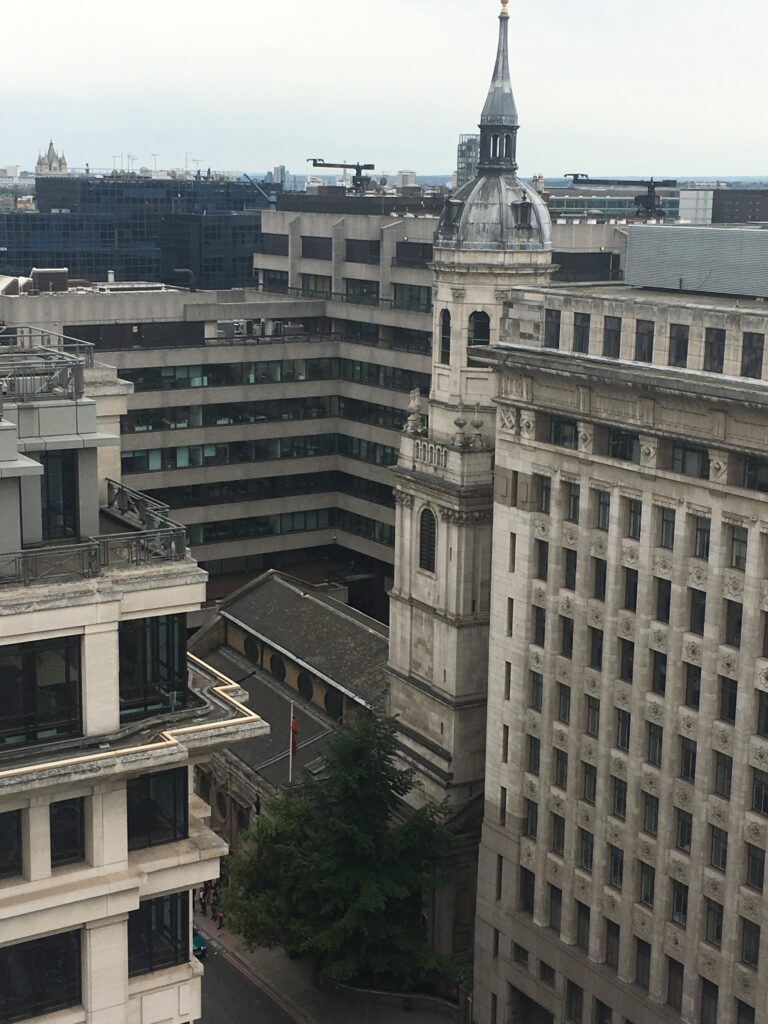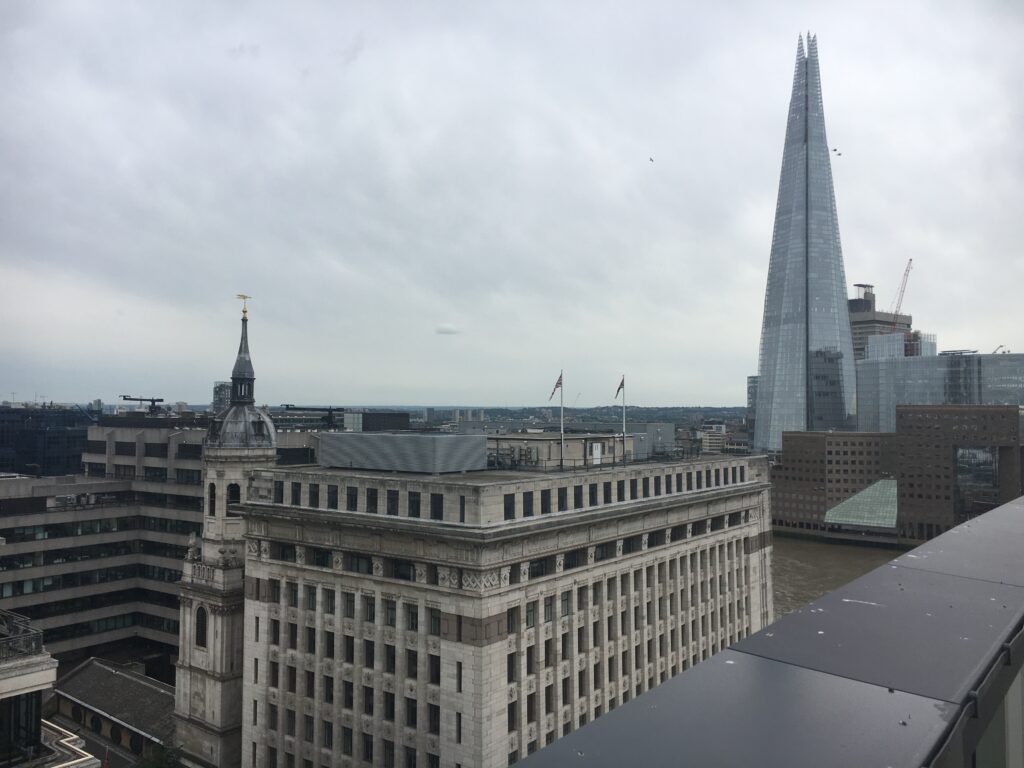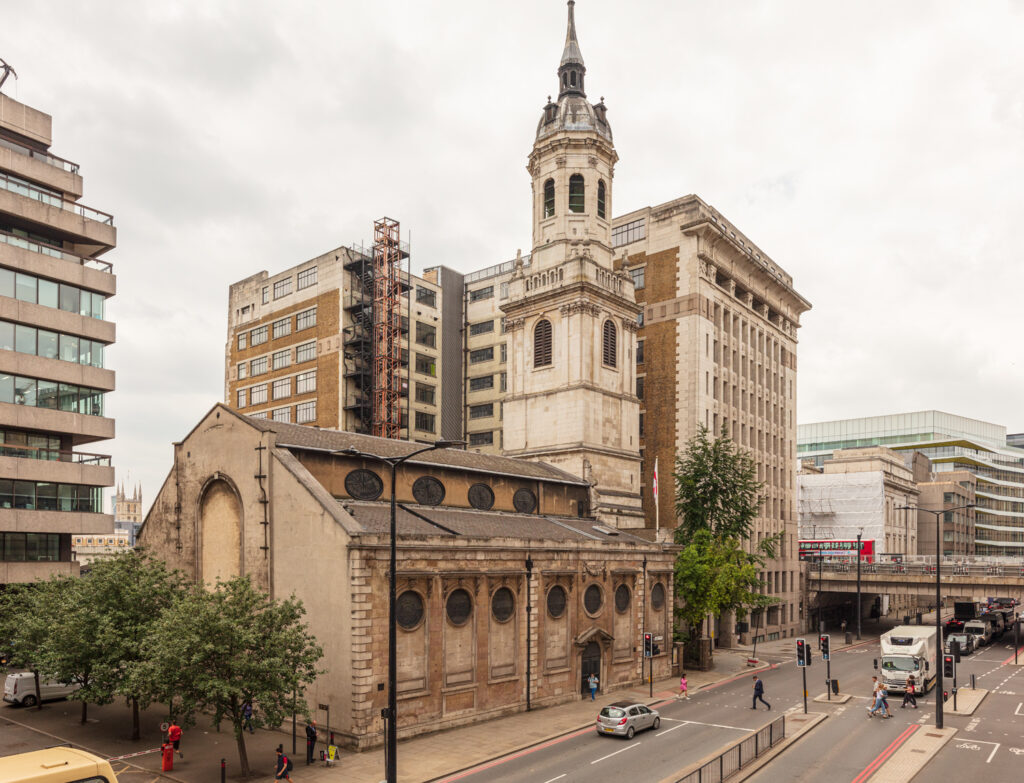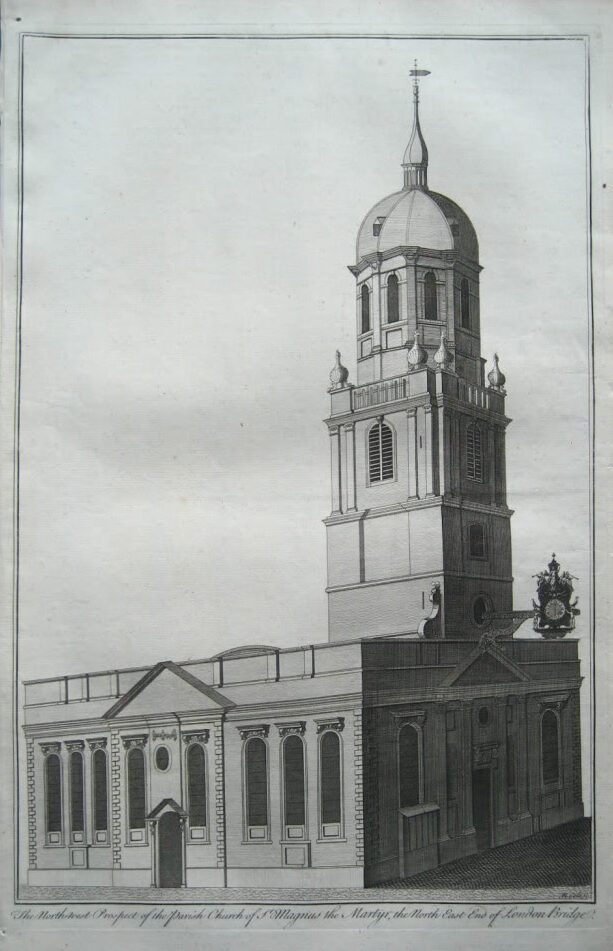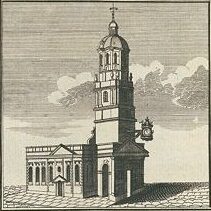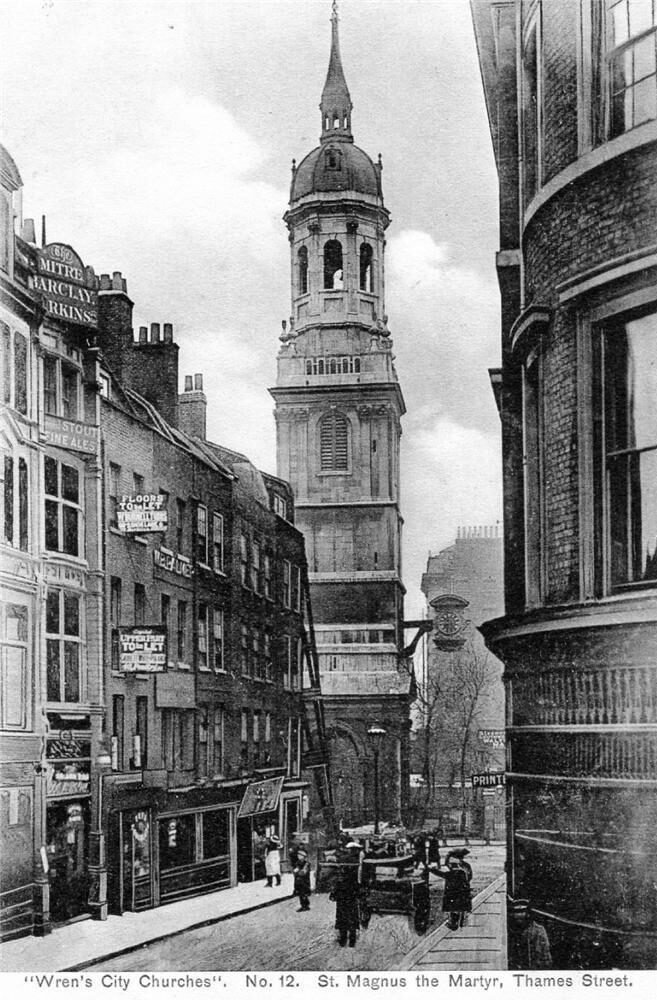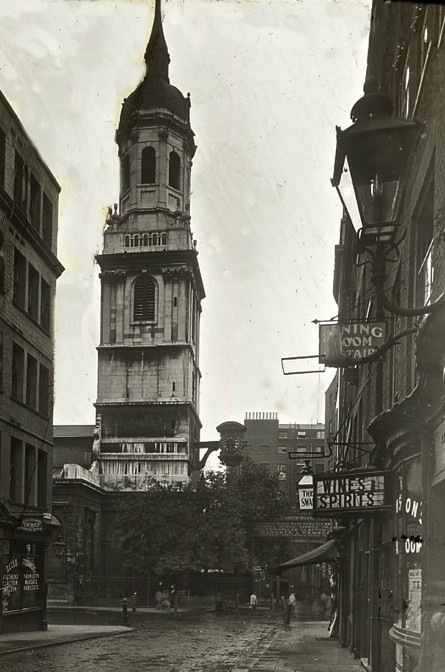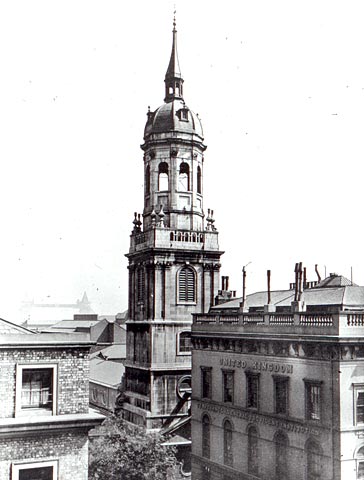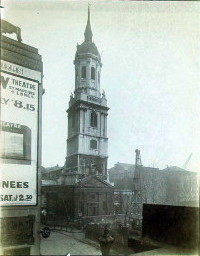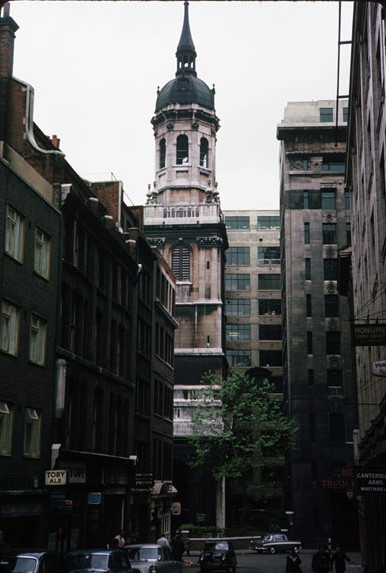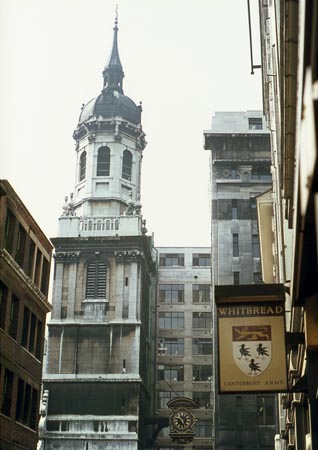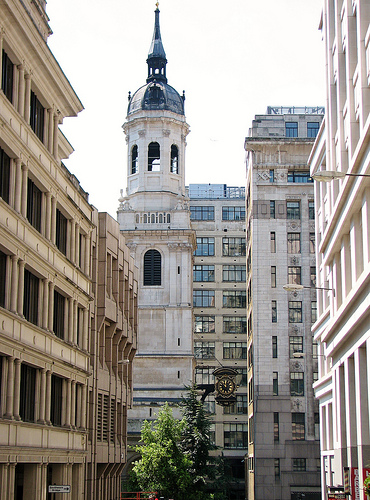“The tower of old Saint Saviour’s Chuch, and the spire of Saint Magnus,
so long the giant-warders of the ancient bridge, were visible in the gloom”
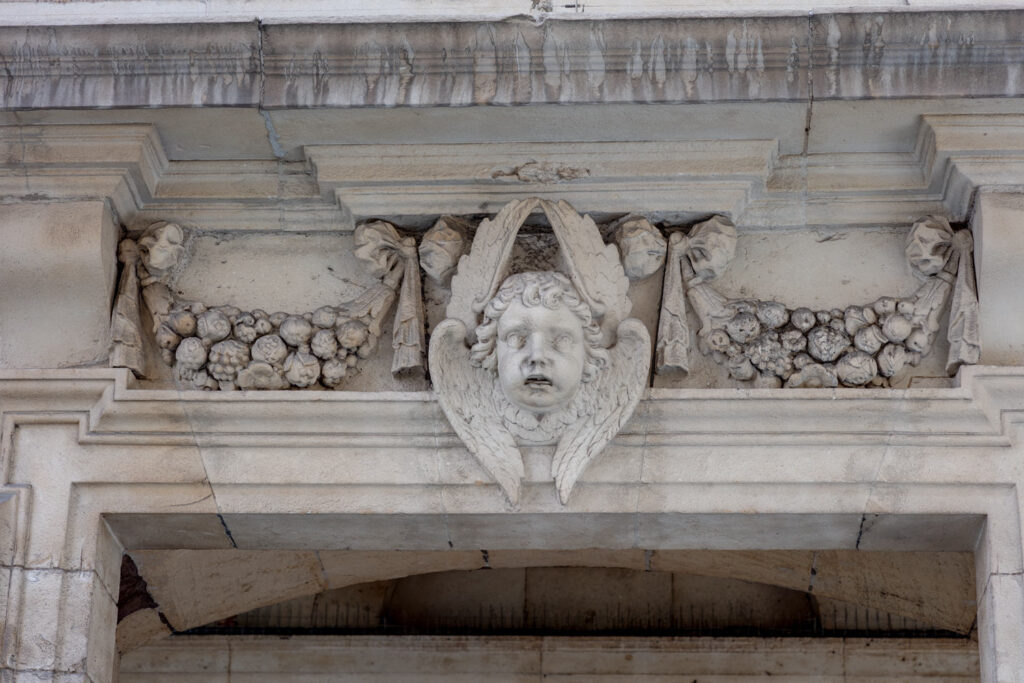
Sir Christopher Wren modelled the steeple of St Magnus on that of St Charles Borromeo in Antwerp. A stone spire was proposed but not executed in the 1680s. The lantern and cupola, very different in design, were added in 1703-1706. The west face of the tower has pilasters, a pediment and a doorway surmounted with a cherubic head and other carving, probably by Wren’s mason, John Thompson. The bracketed clock, dated 1709, was made by Langley Bradley.
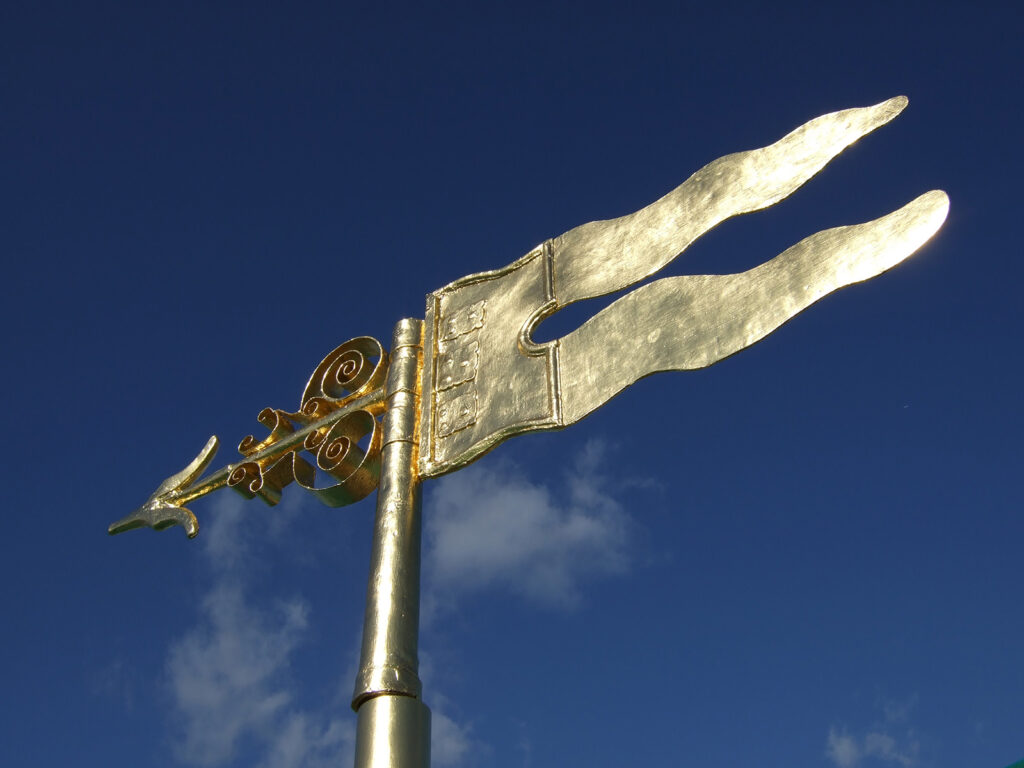
The square tower comprises multiple stages, with a round-arched belfry opening between paired pilasters on the top stage, a pierced parapet and pairs of urns. Above the tower rises a large octagonal stone lantern, on which stands a lead-covered dome with lucarnes, a small lantern with obelisk spire and a weather vane, the whole 185ft high.
Between 1756 and 1762 the Corporation of London demolished the buildings on old London Bridge to widen the roadway, ease traffic congestion and improve safety for pedestrians. As part of the bridge improvements a new pedestrian walkway was built along the eastern side of the bridge. With the other buildings gone St Magnus blocked the new walkway.
Sir Christopher Wren’s rebuilding of St Magnus the Martyr
As a consequence it was necessary in 1762 to 1763 to remove the vestry rooms at the west end of the church and open up the side (north and south) arches of the tower with their concave-arched niches so that people could pass underneath the tower. The tower’s lower storey thus became an external porch and two windows were lost from the north facade. The entrance to the church is now via a square-headed door with moulded architrave on the eastern side of the tower.
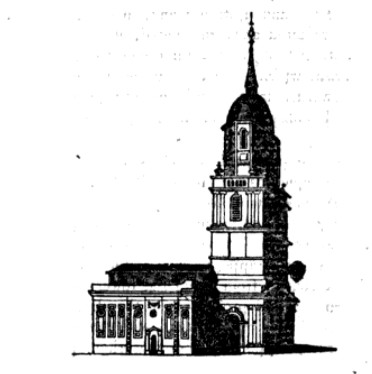
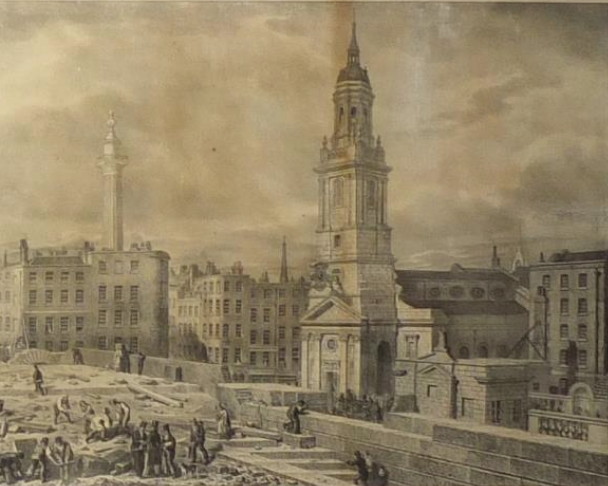
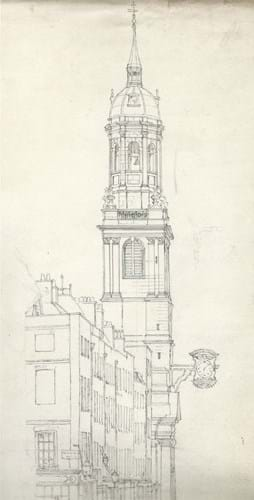
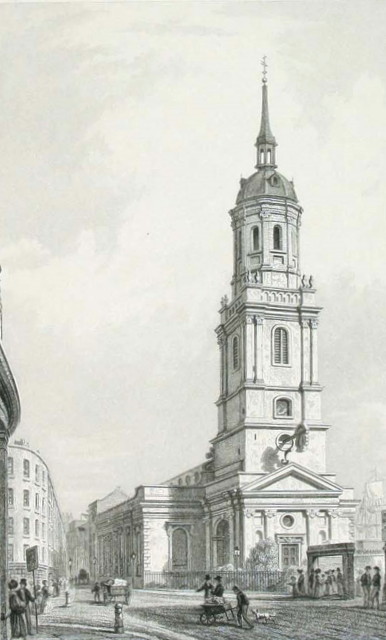
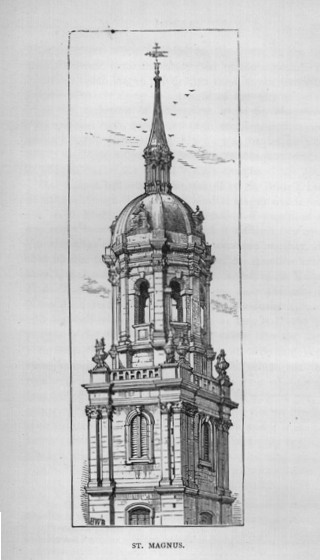
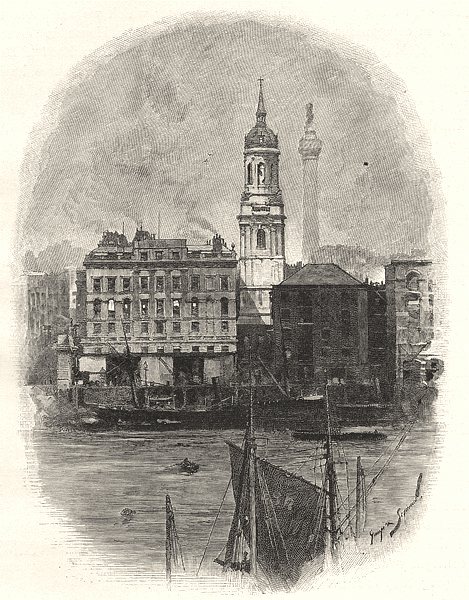
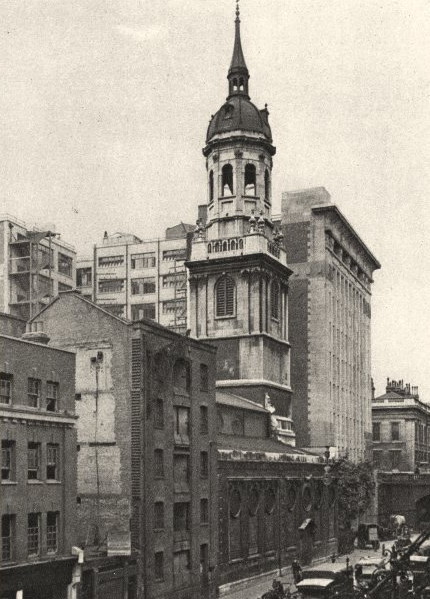
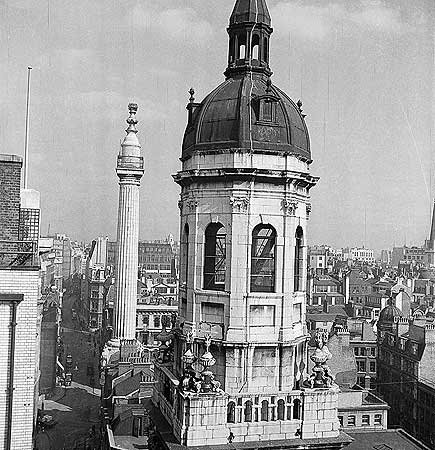
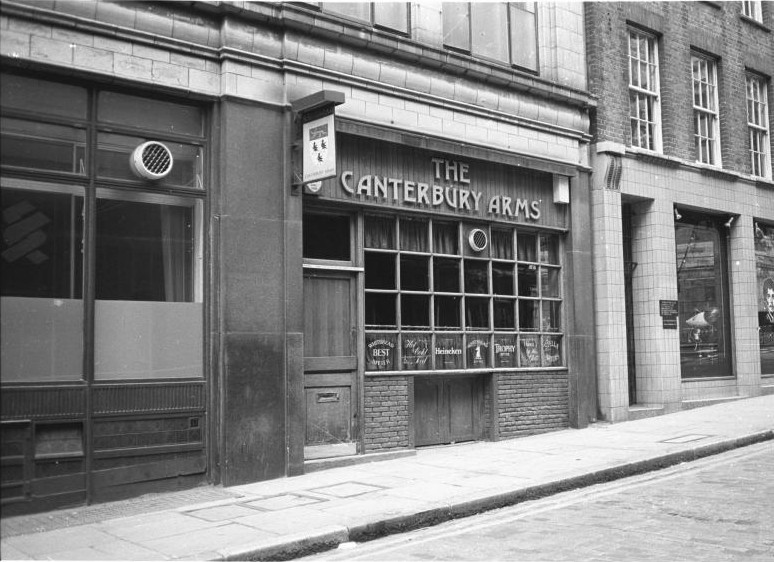
EC3 CANTERBURY ARMS :20 Fish Street Hill. Whitbread. WHITBREAD WETHERED. Closes w/es save for Sat am. Small busy one bar : wood panelled interior is crammed with pictures. Although the building is modern, there has been a pub on this site for centuries.The name is associated with pilrimages to the shrine of Thomas a Becket: pilgrims used to start from a nearby church and the saint was born in Cheapside. Food am & pm Mon-Fri/Darts.
From the East London & City Beer Guide 1983 (The East London & City Branch of the Campaign for Real Ale)
